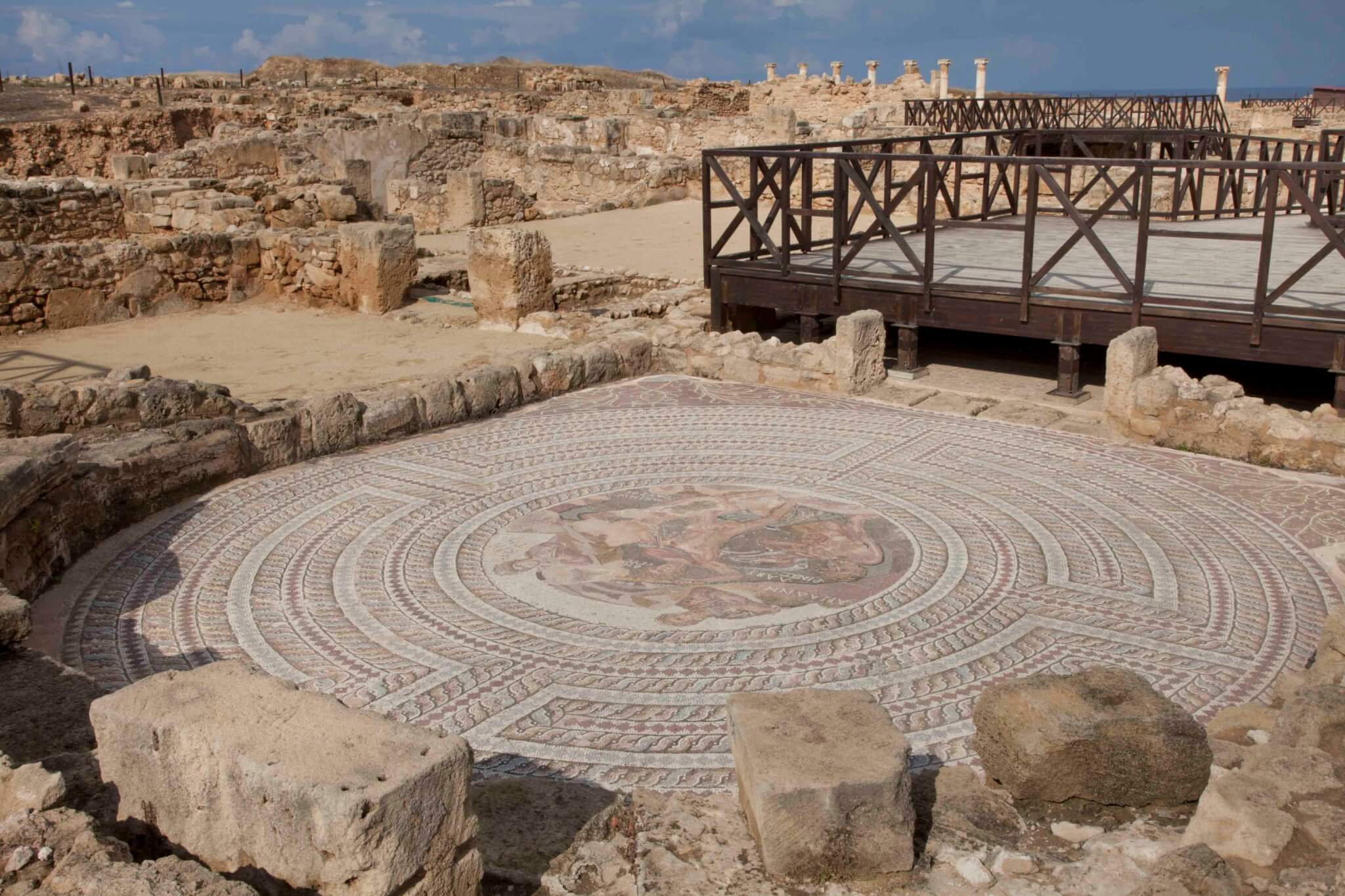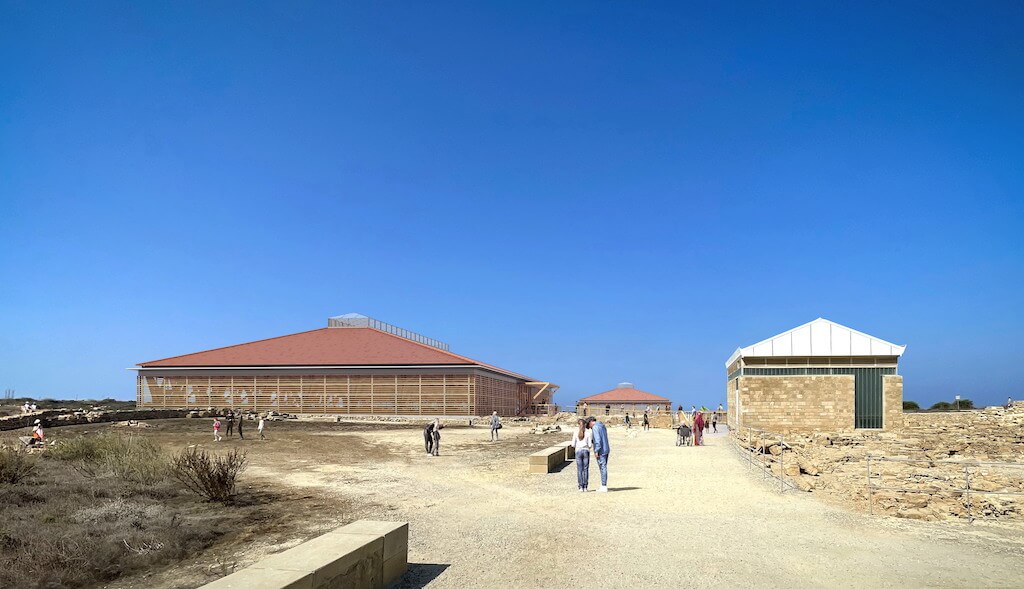Hugh Broughton Architects tapped to design ancient mosaic–protecting shelters at UNESCO World Heritage Site in Cyprus
Hugh Broughton Architects, a multiple RIBA National Award–winning London practice perhaps best known for designing polar research facilities, has emerged as the winner in an international design competition seeking protective shelters at Nea Paphos, a UNESCO World Heritage Site–inscribed archaeological park in southwest Cyprus.
Launched in 2019 by the Getty Conservation Institute (GCI) and the Department of Antiquities of Cyprus (DoA), the competition tasked entrants to conceive prototype designs for innovative and resilient structures to safeguard ancient mosaic pavements unearthed at the Mediterranean Sea–abutting complex, once the site of a major Greek and Roman city. (Today, the archaeological site, famed for said mosaics and sprawling ruins, is located within the Nea Paphos, or Nea Pafos, section of the modern coastal city of Paphos.) “The construction of protective shelters is imperative in order to secure and present the mosaic pavements and other excavated remains for the future,” the GCI explained in a news release.
The protective shelter scheme is part of a larger conservation and management plan for the site developed by GCI and DoA.


Joining Hugh Broughton Architects were five other shortlisted firms: Carmody Groarke, Cullinan Studio, Studio Gionata Rizzi, Machado Silvetti, and Sela Jaymes Architects (in association with Gort Scott). Like Hugh Broughton Architects, all are London-based save for Boston’s Machado Silvetti and Italy’s Studio Gionata Rizzi. Hugh Broughton Architects’ shelter design was ultimately selected from this group of top contenders by a jury panel comprised of GCI and DoA staff joined by independent international experts in a range of relevant fields including structural engineering, conservation, and archaeology. Pamela Hawkes, Professor of Practice in Historic Preservation at the University of Pennsylvania Weitzman School of Design, served as jury chair.
As detailed in the news release, the jury found Hugh Broughton Architects’ proposed shelter design to be the “most comprehensive and well-balanced response to the complex criteria established by the design brief, with priority given to protection of the mosaics.” It features a column-free interior and surface-bearing foundations that tread lightly on the sensitive site with also providing adequate protection against seismic activity and tsunami threats. Crucially, the winning shelter prototypes—conceived, per the competition design brief, to protect major mosaics at two different ruins at Nea Paphos, the House of Orpheus and the Villa of Theseus—blend into the vast archaeological complex and surrounding city and are not visually jarring. Featuring hipped roofs and incorporating readily available indigenous building materials, the kit-of-parts structures are designed to be easily replicable.

“Hugh Broughton Architects’ creative and thoughtful design concept provides protection for the site’s mosaics with structures that are sustainable and sensitive to the archaeological context,” said Jeanne Marie Teutonico, associate director for strategic initiatives and publications at the GCI, in a statement.
“We have proposed solutions which minimize physical and visual impact on the site and make best use of sustainable passive design techniques to protect the remarkable Roman mosaics and archaeology,” added Hugh Broughton, director of Hugh Broughton Architects, which was also shortlisted earlier this year for a major revamp of RIBA headquarters in London. “Our designs reflect a creative and methodical collaboration between architects, conservation specialists, and engineers, all of whom are looking forward to working in partnership with the GCI and DoA to develop proposals to preserve the future of this stunning historic place.”
You can learn more about the winning shelter design and the site itself here.

